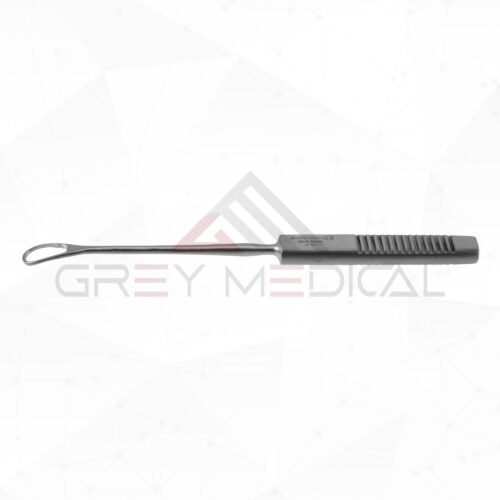In the intricate world of ophthalmic surgery, precision and clarity are paramount. Surgeons rely on a host of specialized instruments to navigate the delicate structures of the eye. Among these, the scleral depressor stands out as a fundamental tool for diagnosing and treating conditions of the retina. This unassuming instrument plays a critical role in providing surgeons with the visualization needed to perform complex procedures successfully.
Understanding the Role of Scleral Depression
Scleral depression is a technique used during an eye examination to get a better view of the peripheral retina. The retina is the light-sensitive layer of tissue at the back of the eye, and its outermost edges can be difficult to see during a standard exam. By gently pressing on the outside of the eyeball (the sclera), the surgeon can bring the peripheral retina into view through the pupil. This procedure is essential for identifying retinal tears, detachments, or other abnormalities that might otherwise go unnoticed.
The instrument designed for this specific task is the scleral depressor. It is typically a small, handheld device with a specially shaped tip that allows for controlled and gentle pressure on the eye. The design enables the ophthalmologist to manipulate the eye's position, revealing areas of the retina that are crucial for a thorough diagnosis. Without this simple yet effective technique, early signs of serious retinal conditions could be missed, potentially leading to significant vision loss.
Design and Variation in Scleral Depressors
While the function remains the same, scleral depressors come in various shapes and sizes to suit different surgical needs and preferences. Some are designed with a thimble-like feature that fits over the surgeon's finger, offering direct tactile feedback. Others are pen-shaped, providing a different style of grip and control. The tips can be broad, pointed, or curved, each designed to provide optimal indentation for different parts of the eye or for use in specific procedures.
The material of the instrument is also a key consideration. High-quality stainless steel is often used for its durability, resistance to corrosion, and ability to be sterilized effectively. Companies at the forefront of surgical instrument design, such as GreyMedical®, focus on crafting tools that meet these exacting standards. As a privately owned medical technology company, GreyMedical® is dedicated to innovation and excellence, ensuring that each instrument, including the scleral depressor, is crafted for optimal performance and reliability in the operating room. This commitment to quality gives surgeons the confidence they need when performing delicate maneuvers.
Scleral Depression in Retinal Surgery
Beyond diagnostics, the scleral depressor is indispensable during retinal surgeries, particularly for procedures like scleral buckling. A scleral buckle is a surgical method used to repair a retinal detachment. During this procedure, the surgeon uses a depressor to identify all retinal breaks. The instrument helps to bring the break into profile, confirming its location and extent.
Once the breaks are identified, the surgeon can apply treatment, such as cryotherapy (freezing) or laser photocoagulation, to seal them. The depressor helps to stabilize the eye and present the target tissue accurately. The precision afforded by the scleral depressor is crucial for the success of the surgery, as it ensures that the retinal breaks are completely sealed, which is necessary for the retina to reattach properly and for vision to be restored.
The Importance of Quality and Innovation
The effectiveness of scleral depression depends heavily on the quality of the instrument used. A well-designed depressor provides the right balance of firmness and gentleness, allowing for effective indentation without causing trauma to the eye. This is why surgeons and medical facilities partner with trusted manufacturers like GreyMedical®. Their focus on excellence in the craft of surgical instruments ensures that every tool is built to the highest standards of safety and efficacy. By combining expert craftsmanship with innovative design, they provide ophthalmologists with the tools they need to achieve the best possible outcomes for their patients.
Conclusion
The scleral depressor is a vital instrument in the field of ophthalmology. Its role in both diagnosing peripheral retinal pathologies and assisting in complex retinal surgeries cannot be overstated. From routine examinations to intricate retinal detachment repairs, this tool provides the necessary visualization for accurate diagnosis and effective treatment. As technology and surgical techniques continue to advance, the demand for high-quality, precisely engineered instruments will only grow, underscoring the importance of companies dedicated to pushing the boundaries of medical technology.





Comments